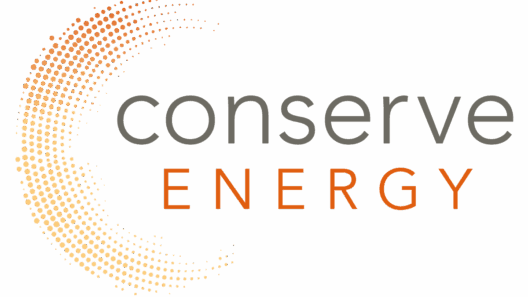In the world of boxing and martial arts, sparring is a critical training component. It allows athletes to refine their techniques, improve their physical abilities, and simulate real match conditions. However, this training can often lead to a significant consumption of energy. Therefore, conserving energy while sparring not only enhances performance but also aligns with sustainable practices that benefit both athletes and the environment. This conversation opens up a larger dialogue on efficiency and awareness, emphasizing how mindful energy use can redefine athletic training.
Understanding energy consumption during sparring begins with recognizing how physical exertion operates within a controlled environment. Athletes typically engage in high-intensity intervals, requiring explosive power, endurance, and strategic agility. While intense training sessions can boost physical prowess, they also demand a careful balance of energy conservation and performance optimization. By adopting specific strategies, athletes can effectively prolong their stamina while sparring, thereby improving their overall output.
One primary observation among athletes is the tendency to overexert during sparring sessions. This phenomenon often stems from a competitive nature that drives boxers and martial artists to push beyond their limits. However, the deeper reasoning for this fascination can be traced back to the adrenaline rush associated with sparring, alongside the innate desire to hone one’s skills. Understanding this cycle is crucial in addressing energy conservation. The psychological aspect of combat sports can thus be leveraged to inspire a more measured approach.
Effective warm-ups are foundational for energy conservation during sparring. Engaging in dynamic stretches and mobility drills prior to training can enhance muscle elasticity and reduce the risk of injury. Not only do effective warm-ups prepare muscles for action, but they also allow athletes to gauge their energy reserves. Recognizing one’s own physical state can prevent unnecessary exhaustion during the actual sparring rounds. It is not uncommon for athletes to enter training sessions without adequate preparation, which ultimately drains their energy much faster.
After an appropriate warm-up, consider implementing strategic pacing within sparring sessions. Effective pacing requires self-discipline and a nuanced understanding of individual limits. Short bursts of high-intensity activity can be alternated with periods of lower-intensity movement. This interval approach prevents fatigue and allows for brief recovery periods, enhancing endurance without sacrificing performance. Furthermore, employing a specific structure during training – such as alternating between offensive and defensive maneuvers – provides opportunities for recovery while maintaining an engaged sparring atmosphere.
Nutrition plays an equally significant role in energy conservation. Fueling the body with the right types of foods is essential for maintaining optimal performance. Carbohydrates are vital for quick energy, while proteins support muscle recovery. Hydration is another critical factor – maintaining proper fluid levels can drastically shape an athlete’s energy levels and concentration during sparring. Strategies such as pre-workout snacks and post-session hydration can significantly enhance endurance while minimizing fatigue.
In addition to nutrition, recovery practices directly influence energy conservation in subsequent sparring sessions. Adequate rest – both sleep and post-exercise recovery – allows the body to repair and replenish energy reserves. Incorporating mindfulness practices, such as yoga or meditation, can further facilitate recovery by reducing stress and promoting mental clarity. By fostering a holistic approach to training, athletes can ensure they remain physically and mentally primed for sparring, thereby enhancing overall performance sustainably.
Furthermore, modern technology provides invaluable tools for monitoring energy output and optimizing performance. Wearable devices that track heart rate, activity levels, and recovery parameters empower athletes to gain insights into their training patterns. With real-time data, adjustments can be made to training regimens, ensuring that energy is expended efficiently and strategically during sparring. The intersection of technology and sustainability enhances not just performance but also the broader environmental footprint of sports through data-driven decision-making.
Another vital consideration in energy conservation for sparring involves gear and equipment choices. Selecting lighter and more efficient gear can alleviate excess weight, allowing athletes to move with greater agility and conserve energy more effectively. Investing in high-quality boxing gloves, footwear, and protective gear contributes to a sustainable training experience. Not only does this reduce energy usage, but it also enhances the training process by minimizing distractions related to discomfort or improper fit.
Incorporating breather sessions into training is also instrumental in conserving energy. Setting aside designated time for brief assessments of technique or mental strategy can mitigate exhaustion during sustained sparring. These moments allow for reflection on performance and help recalibrate energy levels for future rounds. Integrating periods of thoughtfulness into physical exertion creates a balance that’s often overlooked in traditional training paradigms.
As the intersection of performance and sustainability continues to evolve, the significance of conserving energy in sparring and boxing will gain more prominence. Athletes face the dual challenge of optimizing performance while embracing eco-conscious practices. By integrating strategies such as effective warm-ups, pacing, nutritional considerations, recovery practices, technological assistance, and mindful movement, boxers can forge a path toward enhanced performance and sustainability.
Ultimately, the fascination with sparring and boxing lies not only in the combat itself but in the ongoing journey toward mastery. Emphasizing energy conservation highlights an undercurrent of mindfulness within training; this approach leads to sustainable practices that better support athletes’ aspirations. Adjusting training methods grants boxers a unique opportunity to redefine their relationship with performance, ensuring they not only excel in the ring but do so in an environmentally-friendly manner.





